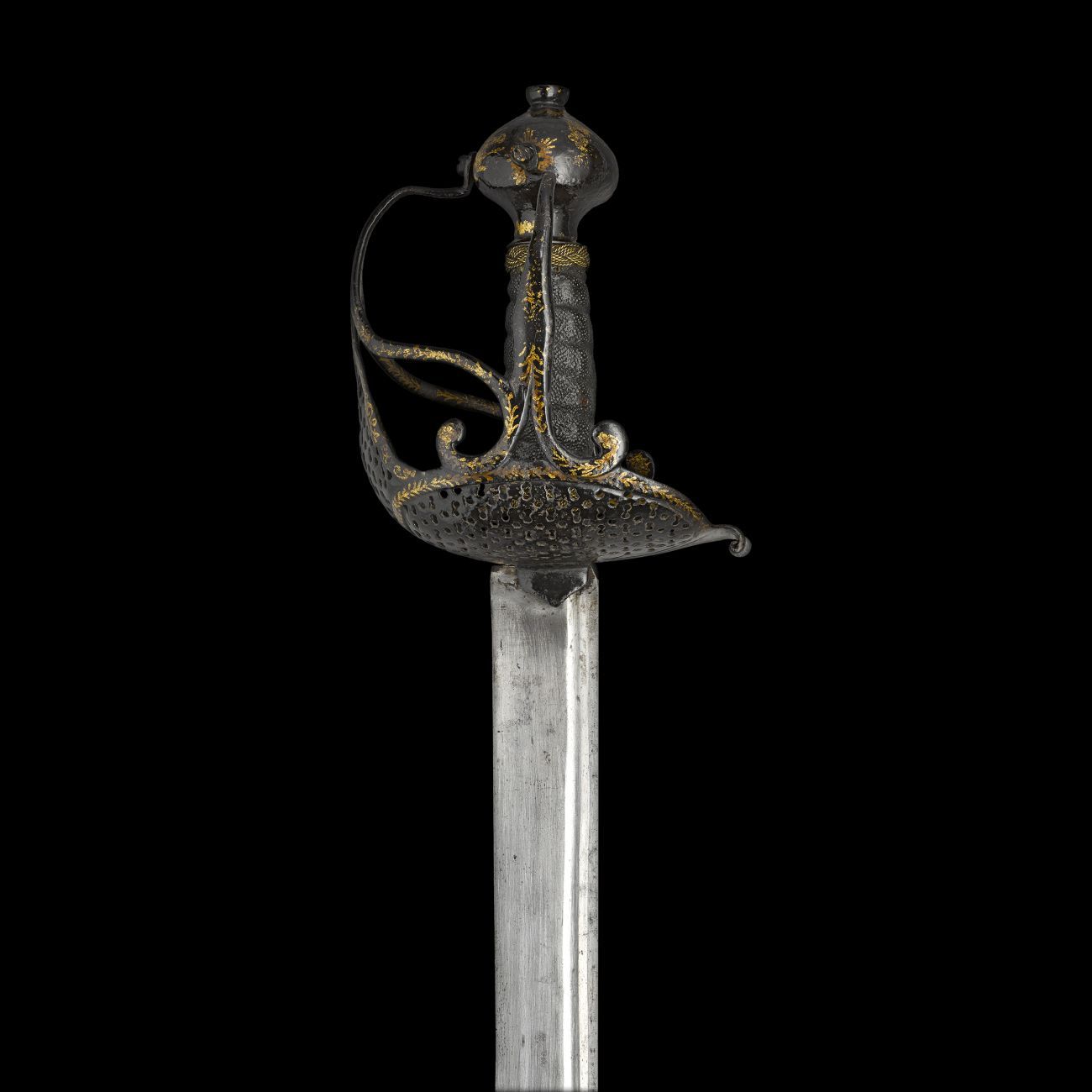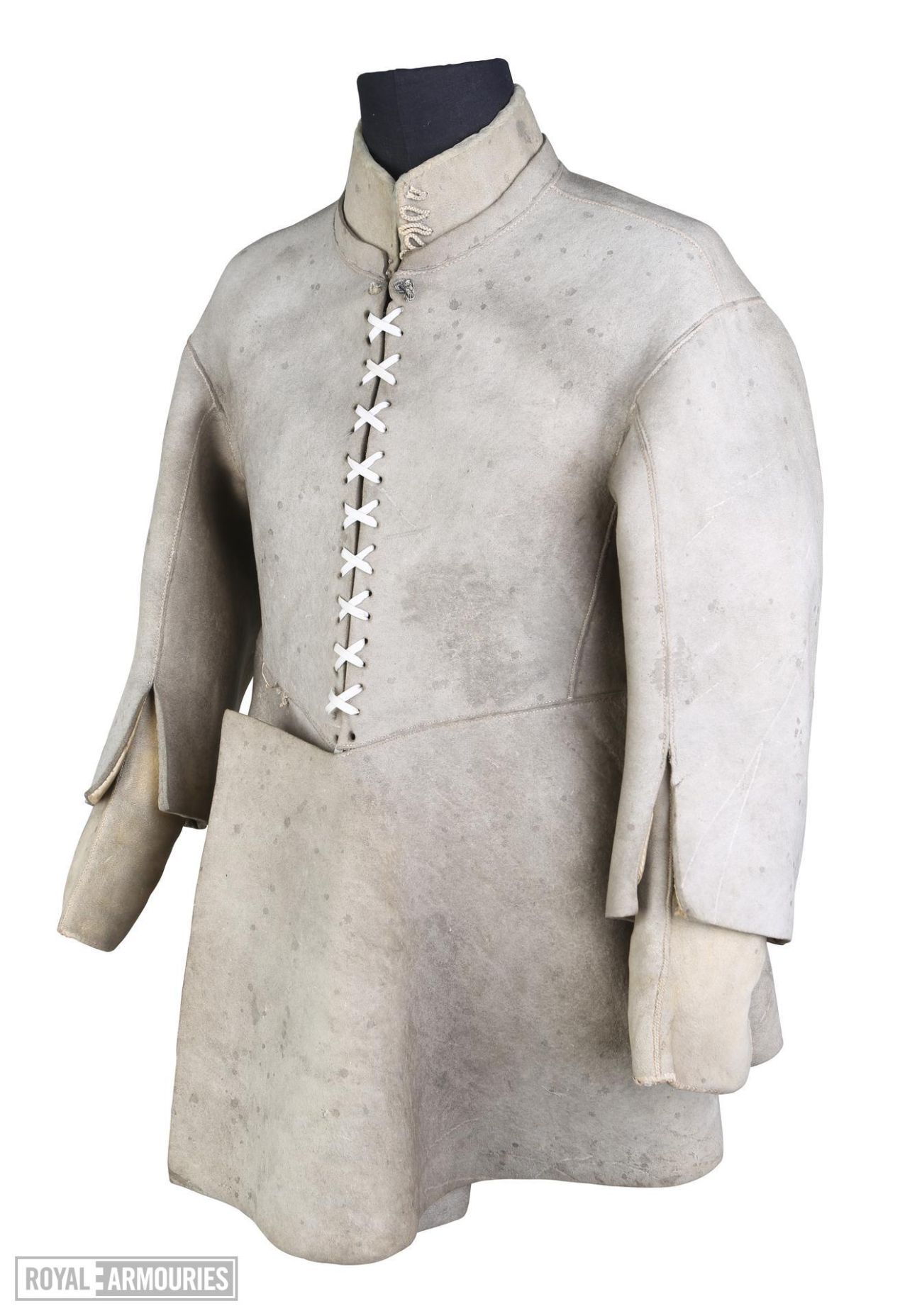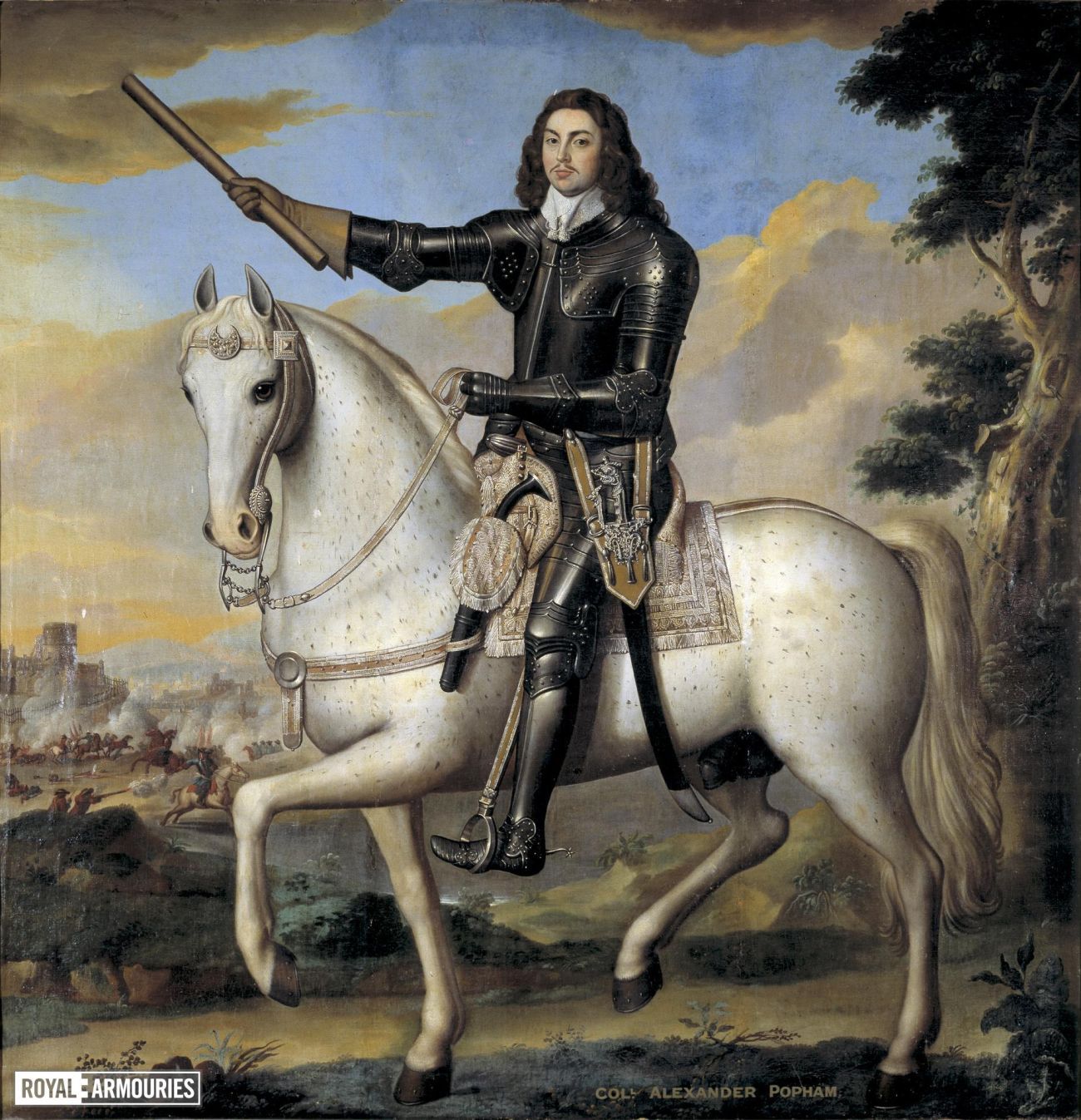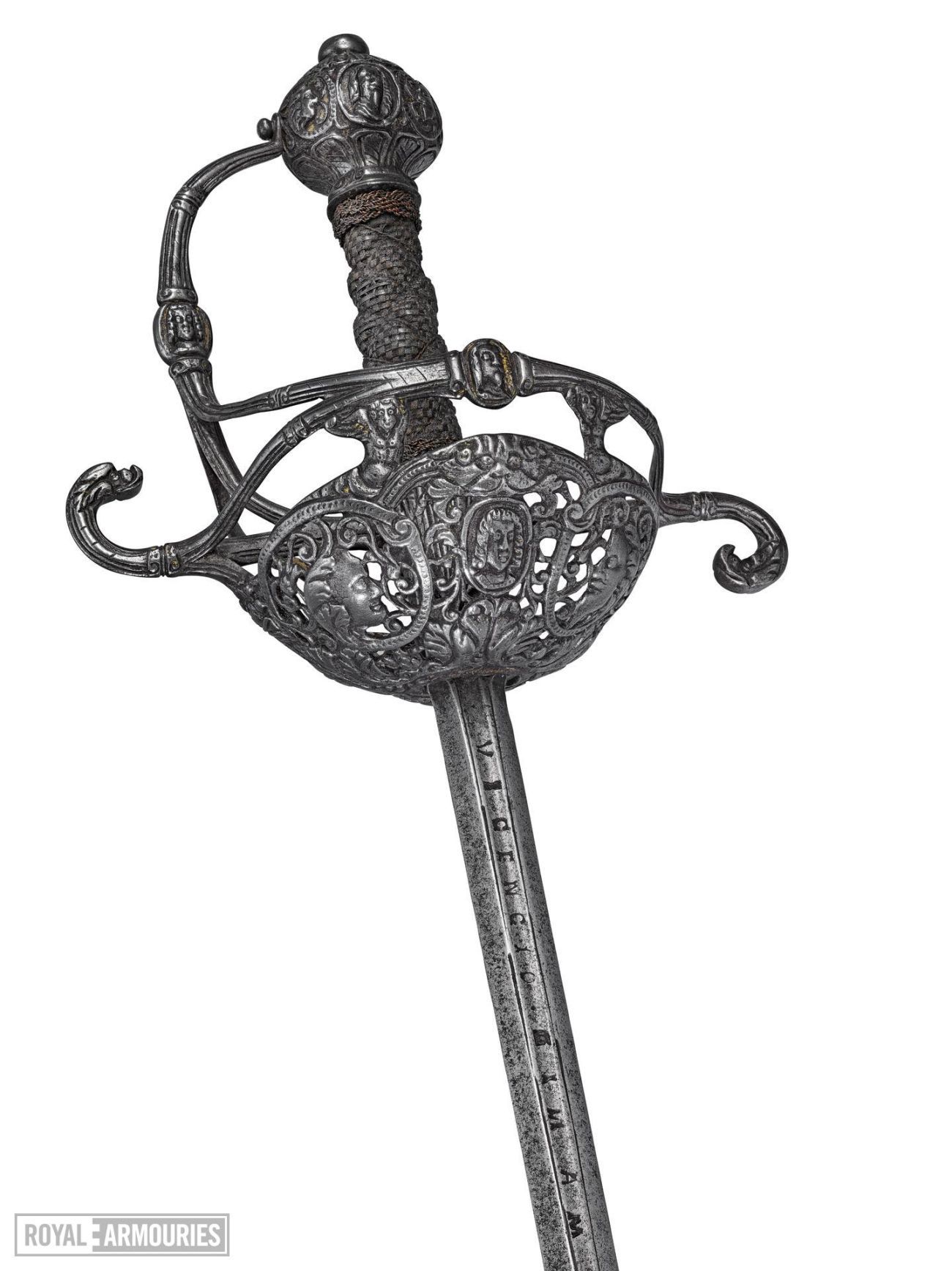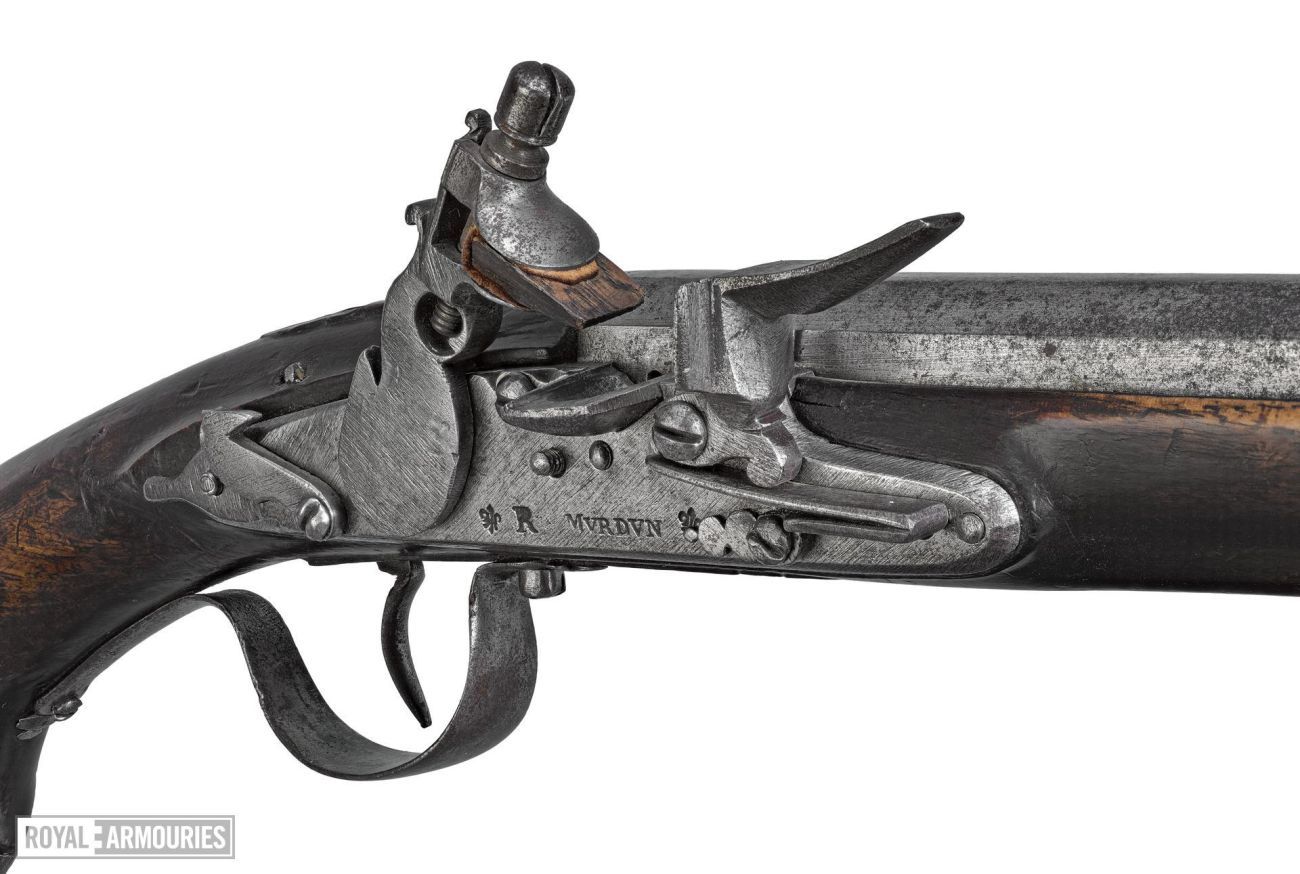When Christmas Was Cancelled
Some of us grumble about the increasing commercialisation of Christmas, but if you were in charge, would you seriously dare to close the shops altogether? 360 years ago in the middle of the British Civil Wars, Christmas insurgents did just that.
In 1647, King Charles I was a prisoner and the war was apparently over. The Puritans who now dominated parliament had long lobbied for a curb to what they saw as the excesses of Christmas. The festival, they said, appeared nowhere in scripture. It was idolatrous, positively pagan, and encouraged sin. So in the summer of that year, parliament banned it.
4 minute read
Mortuary Sword
The Mortuary Sword is reputed to have been used by Oliver Cromwell during the siege of Drogheda in 1649, in which he led the storming party to the final assault. There are two marks on one side of the blade that were thought to have been made by musket balls, although this is now considered unlikely. The hilt has been lacquered in a technique known as 'Japanning,' which was developed in Europe in imitation of Asian lacquer-work. In the 17th-century, European Oriental artwork was becoming very fashionable.
The Buff Coat of John Gell
This impressive Buff Coat was worn by Sir John Gell, 1st Baronet (1593 - 1671). Gell was a parliamentary Colonel and raised a regiment of foot soldiers in service of parliament in October 1642. Buff coats were worn by some cavalrymen both on their own as an alternative to plate armour, or beneath a back or breastplate. Though they would have offered good protection against edged weapons, they were unlikely to have stopped a pistol or musket ball at close range.
Portrait of Colonel Alexander Popham
Colonel Alexander Popham (1605 - 1669) was a notable English politician who served on the Council of State during the Commonwealth. Popham was born at Littlecote House in Wiltshire. The armoury at Littlecote is the most important surviving armoury of the British Civil Wars and was acquired by the Royal Armouries in the 1980s.
See the portrait of Colonel Alexander Popham in our online collection
English/Italian Rapier
This rapier dates from the second quarter of the 17th century. The hilt of the rapier is English and the blade is Italian, it is a very fine example and would have been carried by someone of rank. The heads on the hilt are traditionally thought to represent Charles I and Henrietta Maria, yet there is no firm evidence that this is actually the case. Rapiers such as this were swords of fashion, and it's debatable how effective a sword like this would have been on the battlefield.
Pair of Flintlock Pistols by Robert Murdon
These impressive flintlock pistols date from 1645 and form part of the Littlecote Collection. Their maker Robert Murdon, was based in London and first appears in documentary sources in 1645 as supplying pistols to parliament's New Model Army. In 1658, Murdon was made gunmaker to Oliver Cromwell. Calvary of the period were frequently armed with a pair of pistols which were held in holsters slung either side of the saddle. They were not particularly accurate and military writers of the period recommended they should only be fired as close to the enemy as possible - possibly even with the end of the barrel touching the opponent.
